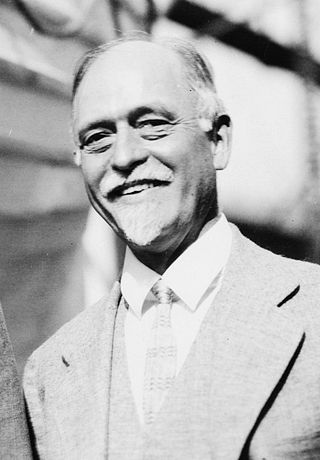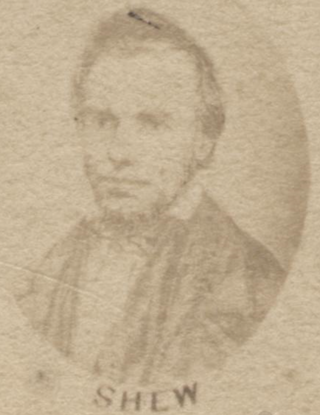
The temperance movement is a social movement promoting temperance or complete abstinence from consumption of alcoholic beverages. Participants in the movement typically criticize alcohol intoxication or promote teetotalism, and its leaders emphasize alcohol's negative effects on people's health, personalities and family lives. Typically the movement promotes alcohol education and it also demands the passage of new laws against the sale of alcohol, either regulations on the availability of alcohol, or the complete prohibition of it. During the 19th and early 20th centuries, the temperance movement became prominent in many countries, particularly in English-speaking, Scandinavian, and majority Protestant ones, and it eventually led to national prohibitions in Canada, Norway, Finland, and the United States, as well as provincial prohibition in India. A number of temperance organizations exist that promote temperance and teetotalism as a virtue.
The Woman's Christian Temperance Union (WCTU) is an international temperance organization. It was among the first organizations of women devoted to social reform with a program that "linked the religious and the secular through concerted and far-reaching reform strategies based on applied Christianity." It plays an influential role in the temperance movement. Originating among women in the United States Prohibition movement, the organization supported the 18th Amendment and was also influential in social reform issues that came to prominence in the progressive era.

Irving Fisher was an American economist, statistician, inventor, eugenicist and progressive social campaigner. He was one of the earliest American neoclassical economists, though his later work on debt deflation has been embraced by the post-Keynesian school. Joseph Schumpeter described him as "the greatest economist the United States has ever produced", an assessment later repeated by James Tobin and Milton Friedman.

The Progressive Era (1896–1917) was a period of widespread social activism and political reform across the United States focused on defeating corruption, monopoly, waste, and inefficiency. The main themes ended during American involvement in World War I (1917–1918) while the waste and efficiency elements continued into the 1920s. Progressives sought to address the problems caused by rapid industrialization, urbanization, immigration, and political corruption; and by the enormous concentration of industrial ownership in monopolies. They were alarmed by the spread of slums, poverty, and the exploitation of labor. Multiple overlapping progressive movements fought perceived social, political and economic ills by advancing democracy, scientific methods, professionalism and efficiency; regulating businesses, protecting the natural environment, and improving working conditions in factories and living conditions of the urban poor. Spreading the message of reform through mass-circulation newspapers and magazines by "probing the dark corners of American life" were investigative journalists known as "muckrakers". The main advocates of progressivism were often middle-class social reformers.

The social hygiene movement was an attempt by Progressive era reformers to control venereal disease, regulate prostitution and vice, and disseminate sexual education through the use of scientific research methods and modern media techniques. Social hygiene as a profession grew alongside social work and other public health movements of the era. Social hygienists emphasized sexual continence and strict self-discipline as a solution to societal ills, tracing prostitution, drug use and illegitimacy to rapid urbanization. The movement remained alive throughout much of the 20th century and found its way into American schools, where it was transmitted in the form of classroom films about menstruation, sexually transmitted disease, drug abuse and acceptable sexual behavior in addition to an array of pamphlets, posters, textbooks and films.
Neo-prohibitionism is a current movement to attempt to stop consumption of alcohol in society through legislation and policies which further restrict the sale, possession, and marketing of alcohol in order to reduce average per capita consumption and change social norms to reduce its acceptability.
The Crusaders was an organization founded to promote the repeal of prohibition in the United States. The executive board consisted of fifty members, including Alfred Sloan, Jr., Sewell Avery, Cleveland Dodge, and Wallage Alexander. They wanted the government to create stronger laws regarding drunkenness.
Ruth Clifford Engs is an American academic writer who is Professor Emeritus, Applied Health Science, Indiana University, Bloomington, IN. Since the mid-1990s she has been engaged in research on social movements related to health and public health issues with a focus on the Progressive Era.
A moral entrepreneur is an individual, group, or formal organization that seeks to influence a group to adopt or maintain a norm; altering the boundaries of altruism, deviance, duty, or compassion.

Religious views on smoking vary widely. Indigenous peoples of the Americas have traditionally used tobacco for religious purposes, while Abrahamic and other religions have only been introduced to the practice in recent times due to the European colonization of the Americas in the 16th century.

In the early 20th century, German researchers found additional evidence linking smoking to health harms, which strengthened the anti-tobacco movement in the Weimar Republic and led to a state-supported anti-smoking campaign. Early anti-tobacco movements grew in many nations from the middle of the 20th century. The 1933–1945 anti-tobacco campaigns in Nazi Germany have been widely publicized, although stronger laws than those passed in Germany were passed in some American states, the UK, and elsewhere between 1890 and 1930. After 1941, anti-tobacco campaigns were restricted by the Nazi government.
The social purity movement was a late 19th-century social movement that sought to abolish prostitution and other sexual activities that were considered immoral according to Christian morality. The movement was active in English-speaking nations from the late 1860s to about 1910, exerting an important influence on the contemporaneous feminist, eugenics, and birth control movements.
Orthopathy or natural hygiene (NH) is a set of alternative medical beliefs and practices originating from the Nature Cure movement. Proponents claim that fasting, dieting, and other lifestyle measures are all that is necessary to prevent and treat disease.

In the United States from 1920 to 1933, a nationwide constitutional law prohibited the production, importation, transportation, and sale of alcoholic beverages. The alcohol industry was curtailed by a succession of state legislatures, and finally ended nationwide under the Eighteenth Amendment to the United States Constitution, ratified on January 16, 1919. Prohibition ended with the ratification of the Twenty-first Amendment, which repealed the Eighteenth Amendment on December 5, 1933.
The Anti-Cigarette League of America was an anti-smoking advocacy group which had substantial success in the anti-smoking movement in the late 19th and early 20th centuries in the United States in passing anti-smoking legislation. The campaign sought to pass smoking bans in public places as well as ban cigarettes themselves.

Lucy Page Gaston was an anti-tobacco activist of the late 19th and early 20th century. She was the founder of the Anti-Cigarette League of America, which had as its goal the abolition of cigarettes.

In the United States, the temperance movement, which sought to curb the consumption of alcohol, had a large influence on American politics and American society in the nineteenth and twentieth centuries, culminating in the prohibition of alcohol, through the Eighteenth Amendment to the United States Constitution, from 1920 to 1933. There is some disagreement whether the policies were a 'failure' or whether they triggered an increase in organized crime, though that remains a commonly held belief. Several years after Prohibition policies were lifted, alcohol use remained significantly lower but eventually rose to pre-prohibition levels. Crimes that were associated with excessive drinking such as domestic abuse also saw a sharp decline during Prohibition. Alcohol consumption is much lower than it was in early 1900's.. Today, there are organizations that continue to promote the cause of temperance. The World Health Organization has noted that out of social problems created by the harmful use of alcohol, "crime and violence related to alcohol consumption" are likely the most significant issue.

Joel Shew was an American physician, hydrotherapist and natural hygiene advocate.
The Race Betterment Foundation was a eugenics and racial hygiene organization founded in 1914 at Battle Creek, Michigan by John Harvey Kellogg due to his concerns about what he perceived as "race degeneracy". The foundation supported conferences, publications, and the formation of a eugenics registry in cooperation with the ERO. The foundation also sponsored the Fitter Families Campaign from 1928 to the late 1930s and funded Battle Creek College. The foundation controlled the Battle Creek Food Company, which in turn served as the major source for Kellogg's eugenics programs, conferences, and Battle Creek College. In his will, Kellogg left his entire estate to the foundation. In 1947, the foundation had over $687,000 in assets. By 1967, the foundation's accounts were a mere $492.87. In 1967, the state of Michigan indicted the trustees for squandering the foundation's funds and the foundation closed.

Daniel Hartman Kress was a Canadian physician, anti-smoking activist, Seventh-day Adventist missionary and vegetarian.









